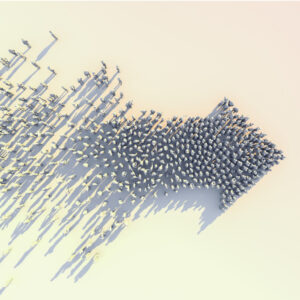Clinical Researcher—April 2021 (Volume 35, Issue 3)
TRIALS & TECHNOLOGY
Rose Higgins
For more than a decade, the concept of personalized medicine has loomed over the healthcare industry with its promise of individually tailored treatments that could deliver better outcomes.
As far back as 2007, a Harvard Business Review article clearly laid out what’s at stake in the pursuit of a more personalized approach to medicine: “Accelerating the adoption of personalized medicine is enormously important in terms of saving both lives and dollars.”
At the time, however, the authors lamented that progress toward this more personalized approach had been “slow and uneven” in the U.S. and across the globe. Now, that may be about to change as the field of radiomics (advanced imaging analytics) is poised to complement existing approaches to personalized medicine to enable drug developers to produce more precise therapeutics.
First, let’s back up for a second. When the life sciences industry has traditionally thought about personalized medicine, the concept was based on analyzing genomic features to develop data to quantify a patient’s risk of developing a disease—searching for mutations in certain genes that increase a patient’s chances of breast cancer, for example.
More recently, advanced imaging analytics, which involve the artificial intelligence–assisted extraction of high-dimensional data from medical images, has emerged as the other side of the personalization coin. Here’s how: By coupling a patient’s genetic data with his or her radiomics-derived, tumor-specific structural (or phenotypic) data, drug developers can generate therapies for that individual with increased levels of precision.
What is Radiomics and What Can it Do for Drug Developers?
Using traditional and conventional methods, radiologists’ views of patients’ images and lesions have been limited to only two dimensions – the long and short axes. Consequently, the primary approach to discerning changes to lesions and tumors involved measuring the two axes to evaluate how they change over time. Unfortunately, this approach misses a lot of key information.
In the real world, lesions and tumors possess and are defined by multiple dimensions, in addition to numerous other structural characteristics. Human cancers, for example, demonstrate many phenotypic variations that that can be visualized noninvasively by advanced medical imaging.
For drug developers, radiomic data gathered through the advanced analysis of medical images leads to more precise profiling of patients, tumors and therapies across multiple dimensions, enabling life sciences companies to find patterns and similarities that would be unobtainable through conventional means.
More specifically, coupling patients’ radiomic data with their genetic information helps life sciences companies conduct clinical trials with greater accuracy and speed by uncovering insights that cannot be discerned from traditional reading methods of standard imaging modalities such as CT, MRI, or PET scans.
Radiomics can also benefit drug developers by contributing to the “last mile” of personalized medicine development. The combination of genomic data in addition to phenotypic data obtained by radiomics from medical images provides life sciences companies with greater adaptability in clinical trial design by mapping the effectiveness of drugs to show whether treatments under trial are more effective for patients with shared characteristics.
Accelerating Clinical Trials with Advanced Imaging Analytics
The growing popularity of adaptive clinical trials has led to drug developers performing reviews and analyses of results throughout the trial process. For example, whenever researchers surface relevant trial data from laboratory work, imaging, or other sources, they can adapt trials to account for these factors with regulatory approval. As more data are captured and analyzed, the ongoing trial will yield more accurate and precise conclusions.
By showing previously hidden data and patterns within a lesion, radiomic data represent a positive addition to these datasets that serves as an early indicator of treatment effectiveness. For example, linking tumor phenotype and mechanism of action of a novel drug helps developers address tumor aggressiveness, metastatic potential, and tumor response to therapy.
Used in this way, radiomics can accelerate adaptive clinical trials by delivering greater focus. In cases in which advanced imaging data reveal the shared patient characteristic for which a therapy is most effective early in a trial, researchers can center their attention on those patients. Similarly, radiomic data can reveal to life sciences organizations whether the market for a particular drug that appears to benefit only a small subsegment of the target population is significant enough to continue pursuing.
Leveraging Radiomics to Create Better Phase III Outcomes
The transition from Phase II to Phase III of a clinical trial represents a stage of the drug development journey that brings high risks in terms of wasted time and investment. To overcome these risks, researchers can look to radiomic data to obtain a deeper understanding of the shared characteristics of the patient groups for whom the treatment has delivered the greatest and least benefits.
As a result, researchers can then target for clinical trial recruitment patients who share these characteristics—to investigate whether there are even deeper similarities or any barriers within what appears to be the target group that would prevent success. Leveraging this enhanced focus, life sciences organizations gain the ability to reduce overall drug development timelines substantially, while also cutting associated costs and delivering a more precisely targeted treatment to patients.
Conclusion
While the life sciences industry has without a doubt experienced consequential advances in personalized medicine since the “slow and uneven” days of 2007 referred to earlier, few would dispute that we have a lot more progress to achieve. By representing the missing link that connects an individual patient’s phenotypic and genomic data, radiomics can help drug developers engineer more targeted, precise therapies that will help deliver on personalized medicine’s promise.

Rose Higgins serves as Chief Executive Officer of HealthMyne, a pioneer in applied radiomics, which is the cutting-edge field of extracting novel data and biomarkers from medical images.



